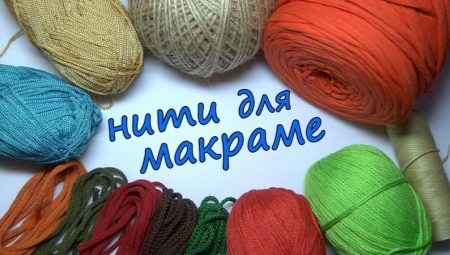Many women are fond of needlework. This occupation is interesting, develops imagination, motility of fingers and hands, soothes. One of the types of needlework is macrame. It consists in creating various things (from bracelets to large crafts, curtains and even clothes) with the help of threads, their weaving and knitting knots.
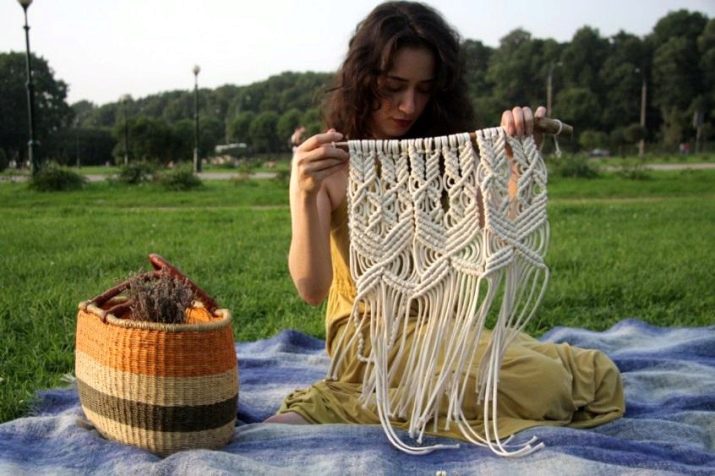
Features
Some of the important points in needlework are:
- you need to clearly understand what you want to get at the end;
- you need to know the designations of the schemes (if you work with them);
- it is worth being able to choose the right thread for each product.
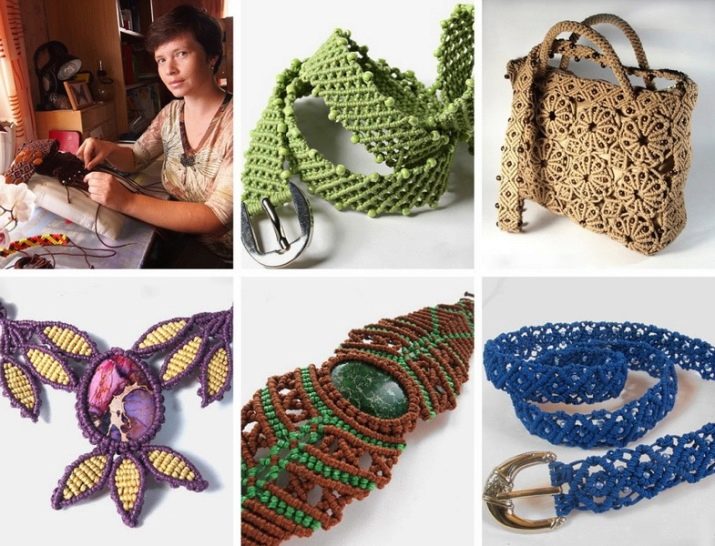
There are many different types of working materials (threads) with their own characteristics. Therefore, before you begin to work, you need to understand what threads are needed.
Which ones are needed?
For each type of product, yarns with specific characteristics are suitable. For example, rugs, curtains, napkins, coasters and panels can be woven from thick threads. The average thickness of the material can be used to create decorative vases - you can decorate a jar or a bottle in this way. Pendants, earrings or even pendants can be made from fairly thin threads of floss or nylon, silk, cotton.
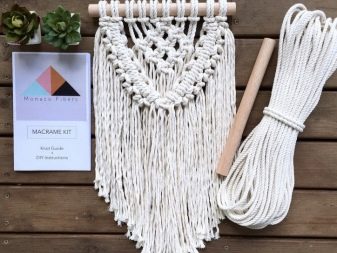
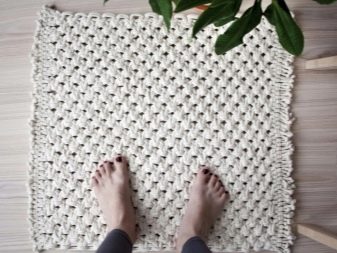
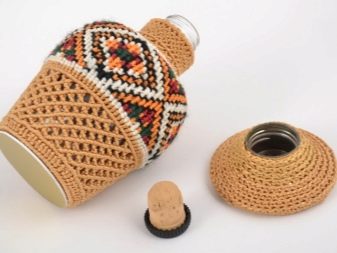
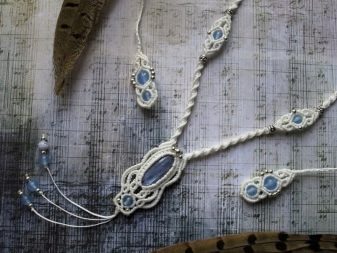
What are the macrame thread requirements?
- Primarily, the material must be of high quality. If the product is supposed to be colored, then the color is preferably a pleasant, soft shade and resistant, because the product can come in contact with sunlight, water, the human body - this can lead to fading of the material or the development of allergic reactions in the wearer. The thread must be safe.
- Also desirable do not use dark shades or, conversely, too light (although needlewomen resort to them quite often), as well as the "poisonous" tone of thread. Masters say that in such products it is difficult to disassemble the pattern, and also it is quite difficult to fit into the surrounding interior or combine with clothes (if it is a bracelet, for example).
- The needlewoman must know how to combine colors in the event that the item is polychrome (two or more shades).
- Material must possess sufficient strength, elasticity.
- The harness section must be round.. This will ensure the bulkiness of your knots and the beauty of the product.
- For the convenience of weaving and knitting knots, as well as to make the product last longer it is advisable to use moderately slippery fibers. Synthetic threads are most often known for their increased slippery.
- As mentioned above, you need to understand which fiber is suitable for creating the product. This takes into account the thickness, color, nature (synthetic or natural material), the strength of the thread. And also you need to understand the purpose of the crafts, what is the method of use, location (for example, in a room, on a nightstand). Given these and other factors, it’s easier to pick up working material.
- Also, the fiber should be pleasant to the touch. This is important both for the needlewoman, and if the product is intended for contact with the skin.
- Fluffy in macram will be superfluous. She will not allow to consider the pattern, also the appearance will seem sloppy. But the volume of the thread or its "plush" is quite suitable.
- The threads should have a certain stiffness and torsion. This allows you to create beautiful knots and durable things. If the material is too hard, it must be softened before starting work. To do this, it is placed in water and boiled for several minutes.
- Also, the threads should be of appropriate length or slightly more than necessary. This, of course, increases consumption and cost, however, if the thread is short, the needlewoman will be forced to start all work again.
- Well, of course, you need to prepare all the necessary tools in advance (scissors, needles, large crochet hooks, fiber fasteners, pins with large heads, an awl and knitting needles so that a knot can be loosened; a measuring tape, a diagram or sketch of a craft, a weight to align the thread, glue if desired use decor for decoration - beads, beads, buttons, feathers, buckles, wooden balls).
Of course, it is not necessary that they all be needed, but it is better to have everything you need at your fingertips.
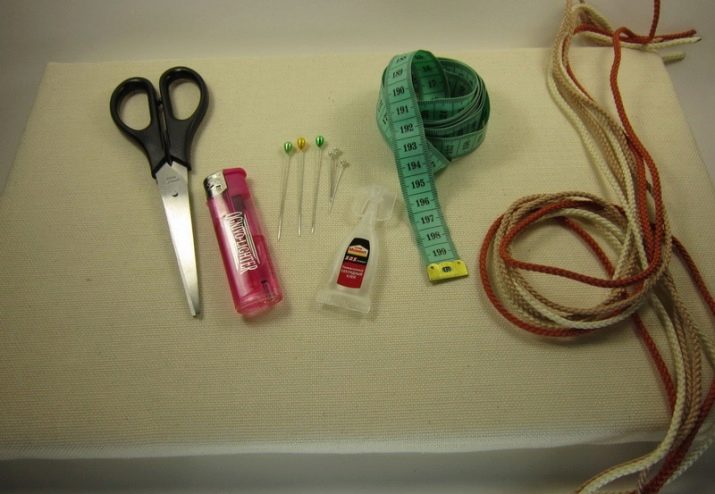

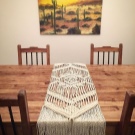
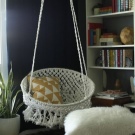
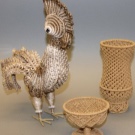
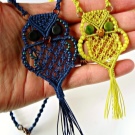
Kinds
All macrame threads can be classified according to several criteria. So, one of them may be the origin of the working material - natural (for example, cotton or wool thread) and synthetic (polypropylene or polyester fiber). By thickness, one can distinguish such types - thin, medium and thick materials. The cross section is flat and round, the fiber structure is straight and twisted. Even the price range can be divided threads, there can be many examples of grouping. Of course, you can’t definitely say which is better. This issue is decided in each individual case by the needlewoman.
- Cotton cord Suitable for making crafts such as earrings, pendants, bracelets, necklaces. However, one must remember that such things are natural, safe (if toxic dyes are not used, but their service life is much shorter). An important nuance is the price issue. Cotton thread is quite inexpensive. However, its end does not melt on fire, to fix the threads, you need to use glue, not a lighter. Thickness can vary from 1 to 5 mm.
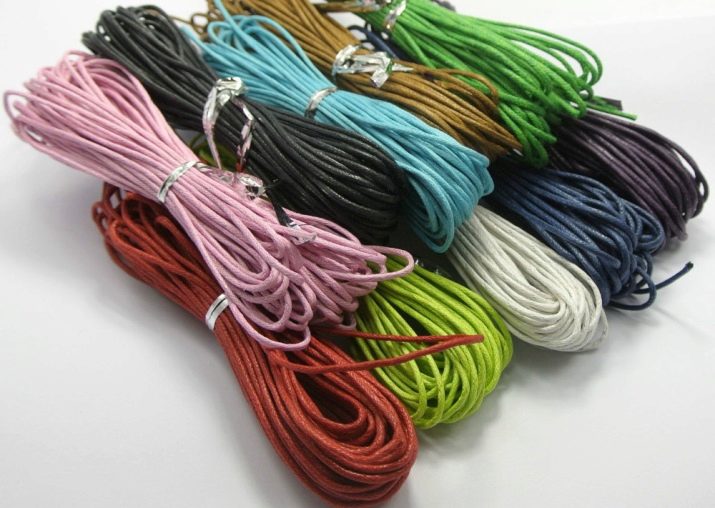
The thread can be waxed, in this case, more rigid than ordinary cotton thread.
- Mouline thread - most often used in weaving bracelets or baubles. The advantages of this material are its low cost (from 10 rubles per one skein), as well as the availability of a large selection of color palettes. The threads are pleasant to the touch.However, they may lose their color over time.
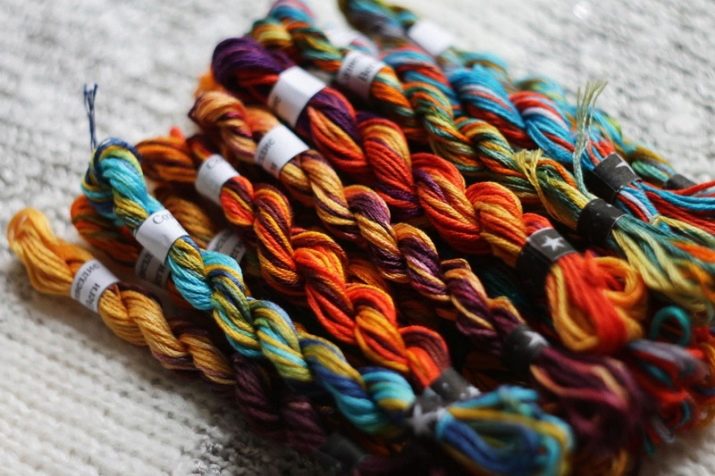
- Nylon can also be waxed. Previously used mainly for flashing the soles of shoes, however, their strength allows you to weave in the macramé technique. This is a material of synthetic origin, has strength, and due to this product from it is durable. Also, the ends of the fibers melt in a fire. Therefore, the edge of the product can be processed with a lighter. Due to waxing, it acquires a certain rigidity.
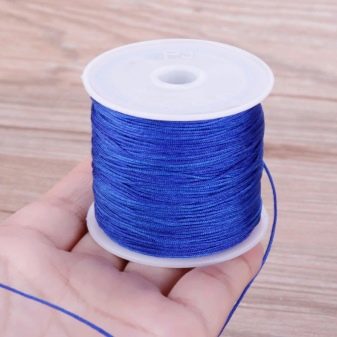
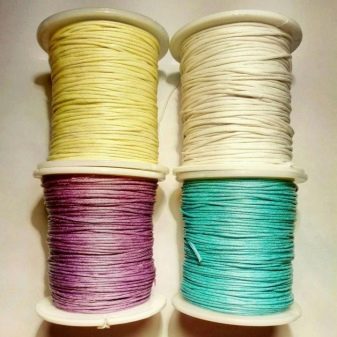
- Sisal thread also applies to natural materials. It is characterized by high rigidity, so when working with it it is advisable to pre-soften the material.
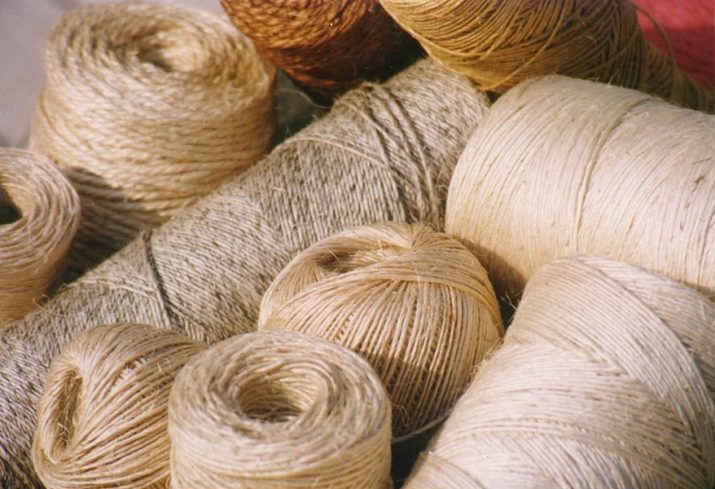
- Macrame - Turkish-made material (mainly). It is characterized by optimal gliding, a wide selection in color. The fiber thickness is about 1.5 mm. This option is perfect for beginner needlewomen.

- Polypropylene rope - This is most often a strong cord. It happens in various shades, it is also presented in a soft version (therefore it is advisable not to confuse them). The thickness is also small 1-2 mm.

- Silk: fine, pleasant to the touch, natural material (although there are synthetic analogues). Small things are made from it, requiring tenderness, elegance - small handbags, clutches, earrings. However, it should be remembered that the ends are not untwisted, the threads need to be treated with glue and a knot made. In work it is worth using PVA glue.
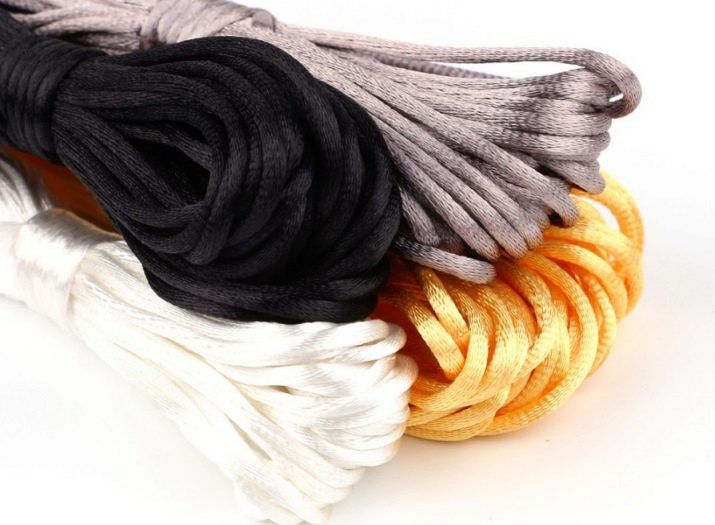
- Jute rope - This is a rather thick, heavy thread, also of natural origin. It has hairiness, rudeness. Its thickness ranges from 1 to 4-6 mm. Therefore, you can create various products. You can make decor items quickly enough with a thick thread, for example, vases or flower pots.
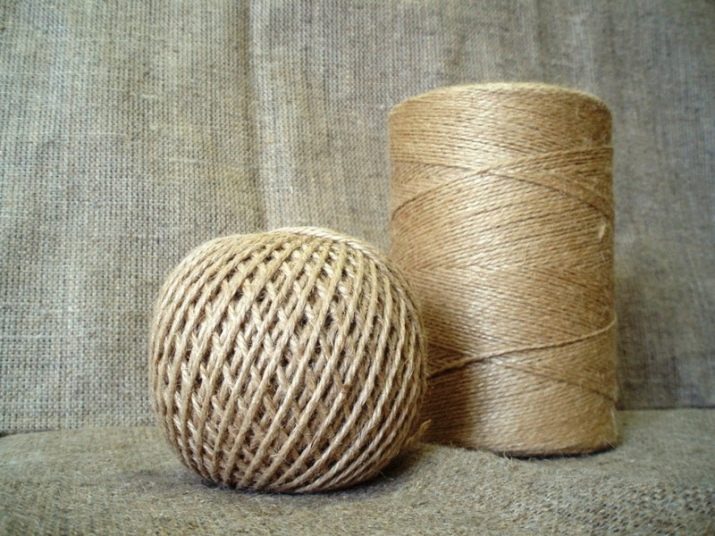
- Some also use fishing threads. They have sufficient strength.
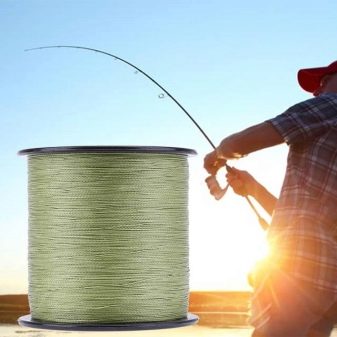
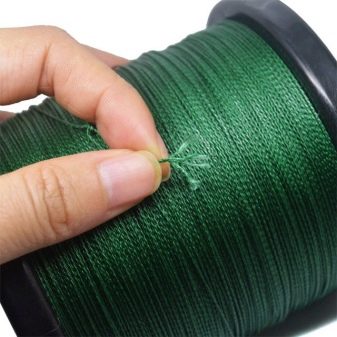
How to calculate the length?
The calculation of the required length of the thread, as well as the desired number of threads is an important point. Usually advised to take a little more than necessaryso that later there is no need to lengthen the thread (to increase it). Typically, in the schemes indicate the length of the thread, its type, which must be used in the process.
You need to decide whether the product is solid or consists of several patterns. First you need to make a sample. Approximately imagine the size of the finished product, the thread should be about 6-7 times longer than the thing. If the canvas consists of several separate patterns, then the length is calculated for each of them separately.
There are a number of tables, based on which, you can determine the required length and number of threads. For example, in order to weave a craft by Herculean knots, you need to measure a thread 5 times longer than the finished product is supposed to be. Suppose that a bracelet made using this technique is 15 centimeters, which means that the working laces for its creation must be at least 75 cm.
And when working with technology rep nodes the working cord should be larger than the nodular (the one on which the nodes will be woven) at least 4 times. That is, let's say the length of the baubles is 13 cm, then the length of the lace will be 52 cm.

Application Tips
Before you start the weaving process, you must first prepare. To do this, calculate the length and number of threads, fix them to the base. The threads should be even, but if they are wrinkled, then they can be smoothed out by holding them under a steam iron. To cut them correctly, it’s worth putting a skein on a centimeter tape and cut the desired length, while the thread should lie quietly, without undue tension.

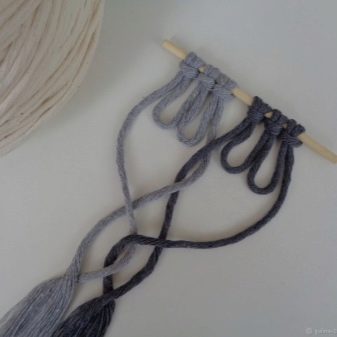
Of course, you need to select the right material for the job. However, some problems can be fixed in the process. For example, if the thread was stiffer than necessary, then it can be softened. For this, it is enough for her to boil in water for 5 minutes. Conversely, if you need to make the thread stronger and tougher, you can soak it in a gelatin solution and let it lie down for a couple of minutes. This is necessary when the product must keep its shape.
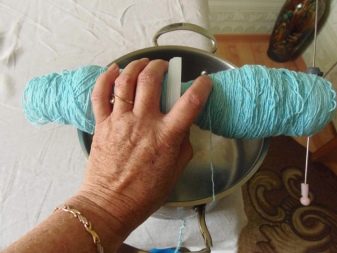

To protect your hands, you can use cotton gloves, and after work, grease your hands with cream, then there will be much less calluses, and the needlework process is more pleasant. If you use silk or weave a product from paper twine, then your hands should often be moistened in warm water. After finishing work it is desirable to iron the product from the wrong side, while it is covered with slightly damp gauze.
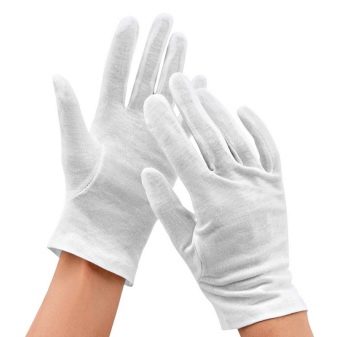
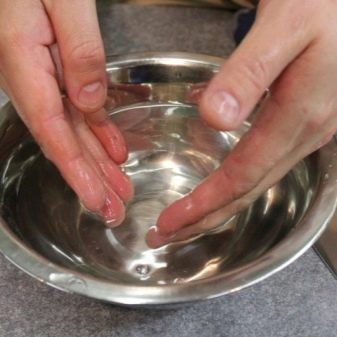
Macrame is an interesting type of needlework, which has many important preparatory points that are always worth remembering. Then the products will be beautiful, and work will be easy and pleasant.
About what threads are suitable for weaving macrame, see the next video.
